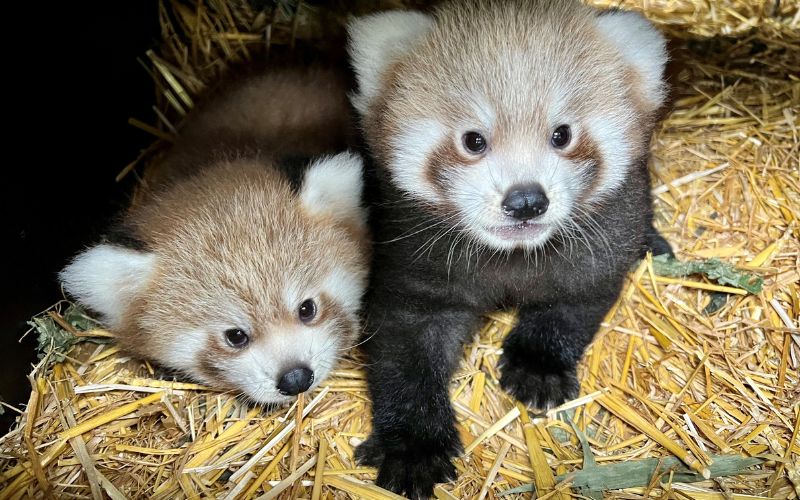A pair of rare red pandas have been born as part of an international breeding programme for the endangered species at a UK safari park.
The twins were born during the summer – but the facility has just released details of the birth in time for Red Panda Day (Saturday September 16th).
The twin males, as yet unnamed, were born at Longleat Safari Park as part of the European Endangered Species Programme and handlers said they were developing well.
‘Whilst they are young, they spend most of their time inside one of the nest boxes in the enclosure, where [their mother] Emma feeds and cleans them,’ animal keeper Samantha Peeke said. ‘As the cubs grow, they will go on to join the endangered species breeding programme and help ensure the survival of their species.
‘Every animal birth is always special and exciting, but breeding an endangered species is an incredible thing to be part of.’

The rare red panda twins will be checked on throughout the day and Emma and father Lionel will be monitored closely whilst keepers adapt her diet and environment as needed to ensure she has everything she needs to look after them.
The cubs will also be regularly weighed to ensure their continued growth and development.
As well as plain bamboo, the Longleat keepers supplement the diet of their pandas with a mix of fruits, eggs and the occasional insects. They also make a special type of bamboo cake.
Last year two female twins were born to parents, Emma and Lionel, as part of Longleat’s successful breeding programme for the endangered species in the grounds of the Wiltshire stately home.
The Decline of Red Pandas
In the wild, red pandas are solitary animals that live in the trees of the Himalayas, seeking out a mate during breeding season once a year.
The species is classified as endangered on the International Union for Conservation of Nature (IUCN) Red List with populations continuing to decline. Their primary threats are habitat loss and degradation, human interference and poaching.

Researchers believe that the total population of red pandas has declined by 40 per cent over the past two decades – with some estimates putting the current population figure as low as 2,500.
The animals inhabit Nepal, the states of Sikkim, West Bengal and Arunachal Pradesh in India, Bhutan, southern Tibet, northern Myanmar and China’s Sichuan and Yunnan provinces.
Red pandas are classified as carnivores but their diet is almost entirely made up of bamboo – they eat around 200,000 bamboo leaves a day. They also eat fruits eggs and occasionally birds.
As the last living member of the Ailuridae family, red pandas are not related to giant pandas, which belong to the Ursidae bear family. Instead they are most closely related to skunks, raccoons and weasels.

The word panda or ‘ponya,’ in Nepali means ‘eater of bamboo’. The distinctive red fur is used for camouflage as there is a lot of red moss and white lichen in the jungles they originate from. The species has a ‘false thumb’ which is an extension of the wrist bone and allows them to hold onto things and climb down trees head-first.
Longleat said it has extensive experience of looking after and breeding rare red pandas, with six previous cubs having been successfully reared at the park, all of which have gone on to join breeding programmes at other collections across Europe.
In addition to being part of the European Endangered Species Programme for the Red Panda, the park is also helping to fund habitat restoration and replanting projects in Nepal.














